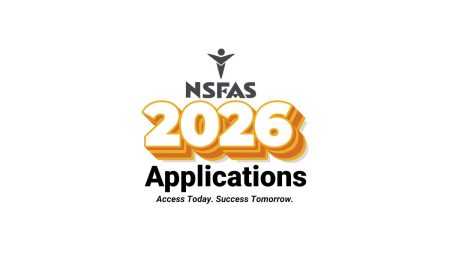The National Student Financial Aid Scheme (NSFAS) is a critical support system for South African students, helping them access tertiary education by covering the costs of their studies. If you have been approved for NSFAS funding, congratulations! However, if you are considering changing your institution, it’s important to understand how the process works and what steps you need to take. Changing institutions can seem like a complicated task, but with the right information, you can make the transition smoothly.
This article will guide you through the process of changing your institution while staying on NSFAS funding, ensuring a hassle-free experience.
Why Change Your Institution?
There can be several reasons why you might want to transfer to a different institution:
- Change in Academic Goals: You might want to pursue a different course of study that is not offered at your current institution.
- Location Preference: You may prefer to study at a university or college closer to home or in a more suitable environment.
- Institutional Issues: If you are experiencing difficulties with the current institution, such as lack of resources or issues with student support, transferring may be the best option.
- Financial Considerations: You may wish to attend a more affordable institution or one with better financial aid options.
Understanding the NSFAS Funding Process
NSFAS offers financial aid to students from low-income households who wish to study at public universities, TVET colleges, and other accredited institutions in South Africa. The funding covers various costs, such as:
- Tuition Fees
- Accommodation Costs
- Learning Materials and Devices
- Transport Costs
However, NSFAS funding is linked to your institution of study. If you want to change your institution, you need to follow a specific process to ensure that your funding remains intact.
Steps to Change Your Institution Under NSFAS Funding
Changing your institution while receiving NSFAS funding is a step-by-step process. Below is a clear guide on how to do it without any hassle:
Step 1: Research and Choose Your New Institution
Before initiating the change, ensure that the institution you want to transfer to is accredited and offers the program you wish to pursue. Verify whether the program is NSFAS-eligible, as not all courses at all institutions are covered under the scheme.
Step 2: Apply to the New Institution
You need to apply to your new institution, just like any other student. Ensure that you meet all the admission requirements, such as academic qualifications and relevant documentation. Be mindful of application deadlines to avoid missing out on the next academic intake.
Step 3: Accept Your Offer
Once you receive your acceptance letter from the new institution, you will need to accept the offer and confirm your place. This is crucial for moving forward with the NSFAS funding transfer process.
Step 4: Inform NSFAS of the Change
NSFAS funding is tied to your institution, so you must inform NSFAS about your intention to change institutions. This can be done via the following methods:
- Online Portal: Log into your NSFAS account and update your institution details. You will need to provide proof of your new acceptance letter.
- NSFAS Call Centre: You can also contact NSFAS’ helpline for assistance on how to proceed with your request. Ensure you have your student number and other relevant details on hand.
- Email: Alternatively, you can email NSFAS with your request, along with the necessary documentation. The email address for NSFAS queries is available on their official website.
Step 5: Submit Required Documentation
To ensure your NSFAS funding is transferred to the new institution, you will need to submit certain documents, including:
- Proof of Admission: A letter of acceptance from the new institution.
- Proof of Registration: Confirmation that you are registered at the new institution.
- NSFAS Application Number: Your NSFAS student reference number.
- Other Relevant Documents: These could include academic transcripts, proof of payment (if applicable), or any additional documents required by the new institution.
Step 6: NSFAS Review and Approval
Once you’ve submitted your documents, NSFAS will review your application to ensure that your funding can be transferred to the new institution. They will verify that the new institution is accredited and that your course is NSFAS-approved.
If there are any issues with the transfer, NSFAS will notify you and provide instructions on what needs to be done.
Step 7: Confirmation and Final Steps
Once NSFAS has processed the transfer and approved your request, you will receive confirmation that your funding has been successfully transferred to the new institution. At this point, you can proceed with your studies at your new institution without any concerns about your NSFAS funding.
Important Considerations When Changing Institutions
While changing institutions under NSFAS funding is a straightforward process, there are a few important things to keep in mind:
| Consideration | Explanation |
|---|---|
| NSFAS Funding Approval | Ensure that the new institution and your chosen program are approved by NSFAS. |
| Academic Standing | Some institutions may have specific academic requirements for transfer students. |
| Transfer Deadlines | Be aware of the application and transfer deadlines, as missing them may delay your funding transfer. |
| Outstanding Balances | Ensure that you do not have any outstanding balances at your old institution, as this can affect your transfer. |
| NSFAS Disbursement Timelines | NSFAS funds are disbursed according to the academic calendar of your new institution, so be mindful of when payments will be made. |
Common Issues and Solutions
Although the transfer process is fairly simple, some students may face challenges. Below are common issues and how to resolve them:
Issue: Delay in NSFAS Approval
- Solution: Contact NSFAS directly and ensure all necessary documents have been submitted. If the delay persists, escalate the issue through the NSFAS helpline.
Issue: NSFAS Denies Transfer
- Solution: Review the reasons for denial and address any issues. It could be due to an incomplete application, an unapproved course, or a lack of accreditation at the new institution. Correct these and resubmit your request.
Issue: Financial Aid Shortage
- Solution: If the NSFAS funding is insufficient to cover your costs, you can explore additional financial aid options, such as bursaries or student loans, or speak to the financial aid office at your new institution for assistance.
Check also: How to Check Your Outstanding NSFAS Loan Repayment Balance in 2025
Changing your institution while receiving NSFAS funding is a feasible process if you follow the correct steps and ensure all documentation is in order. By carefully researching your new institution, applying on time, and keeping NSFAS informed, you can ensure that your funding transfer is approved without complications.
Remember, NSFAS is there to help support your academic journey, and by following these steps, you can focus on your education while ensuring that your financial aid continues to support you at your new institution. Always stay in communication with NSFAS and your new institution to keep everything on track!










